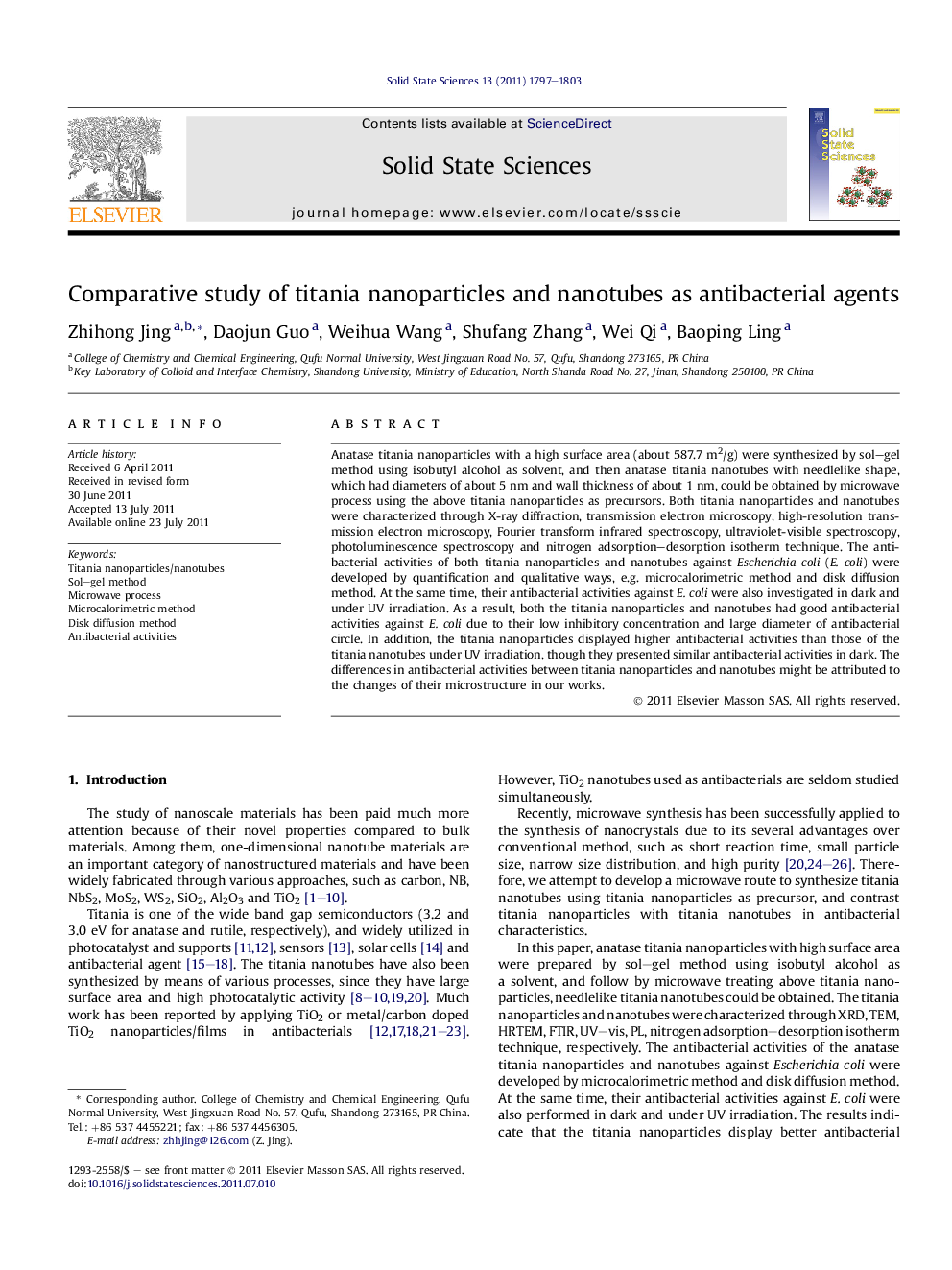| Article ID | Journal | Published Year | Pages | File Type |
|---|---|---|---|---|
| 1505333 | Solid State Sciences | 2011 | 7 Pages |
Anatase titania nanoparticles with a high surface area (about 587.7 m2/g) were synthesized by sol–gel method using isobutyl alcohol as solvent, and then anatase titania nanotubes with needlelike shape, which had diameters of about 5 nm and wall thickness of about 1 nm, could be obtained by microwave process using the above titania nanoparticles as precursors. Both titania nanoparticles and nanotubes were characterized through X-ray diffraction, transmission electron microscopy, high-resolution transmission electron microscopy, Fourier transform infrared spectroscopy, ultraviolet-visible spectroscopy, photoluminescence spectroscopy and nitrogen adsorption–desorption isotherm technique. The antibacterial activities of both titania nanoparticles and nanotubes against Escherichia coli (E. coli) were developed by quantification and qualitative ways, e.g. microcalorimetric method and disk diffusion method. At the same time, their antibacterial activities against E. coli were also investigated in dark and under UV irradiation. As a result, both the titania nanoparticles and nanotubes had good antibacterial activities against E. coli due to their low inhibitory concentration and large diameter of antibacterial circle. In addition, the titania nanoparticles displayed higher antibacterial activities than those of the titania nanotubes under UV irradiation, though they presented similar antibacterial activities in dark. The differences in antibacterial activities between titania nanoparticles and nanotubes might be attributed to the changes of their microstructure in our works.
Graphical abstractTEM images of the TiO2 nanoparticles (a) and the TiO2 nanotubes (b).Figure optionsDownload full-size imageDownload as PowerPoint slideHighlights► Nano-TiO2 was synthesized by sol–gel method using isobutyl alcohol as a solvent. ► TiO2 nanotubes with needlelike shape could be obtained by microwave process. ► The antibacterial activities of TiO2 nanoparticles and nanotubes were developed. ► Differences in antibacterial activities may be attributed to microstructure changes.
